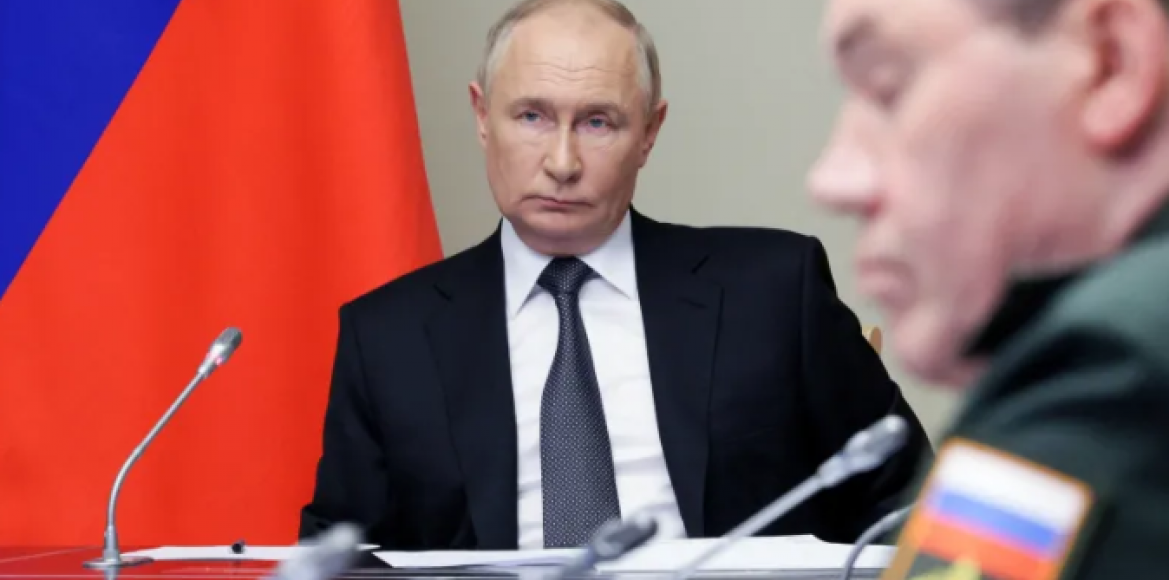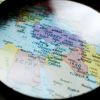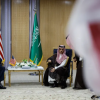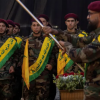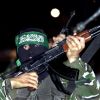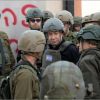Predicting the Collapse of His Regime Is Wishful Thinking
The political regime that Russian President Vladimir Putin helms today is not the same as the one he started a war with in 2022. Russia has been an authoritarian country for years, with national elections heavily weighted in favor of Putin’s party and the ruling elite connected through long-standing patron-client networks. But since the invasion of Ukraine, Russia has turned into a true personalist dictatorship, with unchecked power in the hands of one man—Putin—and the rest of the country’s political institutions relegated to subordinate positions in the authoritarian hierarchy.
The German political theorist Carl Schmitt defined a sovereign ruler as “he who decides the exception,” a description well suited to Putin’s extraordinary wartime authority. As the war enters its third year, Putin’s regime is more closed than ever before, with elections largely functioning as displays of loyalty and a restrictive system of coercion and censorship maintaining social order. Institutions that even just nominally remain connected to the Russian electorate, such as the parliament or gubernatorial offices, have been pushed aside in favor of security agencies or elite, unelected council bodies, such as the Security Council, that serve Putin’s administration as an ersatz tsar’s court.
Because there are few mechanisms in such a system to check the whims of the ruler, many observers, especially those in the democratic West, tend to think of it as brittle, as one bad decision away from collapse. Writing in Foreign Affairs in April, for example, the analyst Maksim Samorukov argued that the personalization of power in Russia made Moscow “liable to commit self-defeating blunders.”
Such a reading of Putin’s system is understandable. Events since the start of the war, however, suggest that the Russian regime is far more resilient than many have predicted. The evidence is especially compelling because the Kremlin has had ample opportunities to succumb to a self-inflicted catastrophe. In the past two years, political disputes over the prosecution of the war, the armed rebellion of the former Wagner paramilitary company leader Yevgeny Prigozhin, and, most recently, a delicate elite reshuffling have all presented internal challenges to the political order in Russia. But the Kremlin has faced down each of them. These instances have demonstrated not just Putin’s firm rule but also the regime’s capacity to react and reorient. The Kremlin has navigated many politically sensitive moments—and even existential crises—and emerged relatively unscathed.
In doing so, the Russian regime has shown it is fully able to maintain its own authority and ensure the acquiescence of both elites and the masses. It has proved it can do what it needs to do in order to survive. It could still encounter unexpected challenges, and the question of political succession after Putin exits the scene looms large. But the most salient feature of the current phase of Putin’s rule is not the vulnerability his consolidation of power creates. It is the regime’s resilience and its demonstrated capacity to adjust.
ONLINE DISCONTENT
The first trial that Putin endured since the full-scale invasion of Ukraine was the fallout from his failure to achieve a swift victory. By all accounts, Russia’s aim in early 2022 was regime change: Moscow intended to decapitate Ukraine’s leadership and install a friendly government in Kyiv. But strong Ukrainian military resistance, the unwavering commitment of Ukrainian President Volodymyr Zelensky and other leaders to the fight, and supplies of Western arms, aid, and intelligence helped Ukraine keep Russian forces at bay and thwarted Moscow’s political objectives.
Over the summer and fall of 2022, after Russia drew back from its early assaults on Kyiv and Kharkiv, a pro-war but regime-skeptical commentariat began casting doubts on the efficacy of Russia’s war effort and the competence of its military leadership. Although this ecosystem of “war correspondents,” as they are known in Russia, held no formal role in the country’s political system, the criticism they circulated online began to delegitimize the decisions of government officials in the eyes of the public. The correspondents’ social media reports decrying the military’s battlefield failures reached millions of Russians, earning these critics a measure of sway.
Rather than fight these commentators, the Kremlin co-opted them. As early as June 2022, Putin began meeting with members of their ranks. Later that year, he established a working group of military bloggers to open channels of dialogue between the war correspondents and the government, elevating their position in the public sphere.
The commentators’ influence on decision-making in Moscow might have ended with discussions in the working group were it not for the shocking success of Ukraine’s September 2022 counteroffensive. That autumn, the Kremlin, seemingly in agreement with the war correspondents about the incapacity of Russia’s military leadership, intervened in the military command structure and launched a round of mobilization that sent hundreds of thousands of new soldiers to the frontlines. In October, Putin named General Sergei Surovikin commander of all troops in Ukraine, signaling the military’s intention to shift to a defensive posture and striking a reputational blow to Minister of Defense Sergei Shoigu and Chief of the General Staff Valery Gerasimov, who had been directing the war effort.
Eventually, the country’s defense leadership swung back; by January 2023, Shoigu and Gerasimov had pushed Surovikin aside, feeding the perception of mistrust between Russian generals fighting on the ground and the military-bureaucratic leadership in Moscow. Yet appointing Surovikin and replenishing the army’s ranks stabilized the battle lines and set up Russian forces to weather Ukraine’s follow-up counteroffensive in the summer of 2023. The Russian public, meanwhile, calmly adjusted to the new phase of the war. The fact that greater political disorder did not follow and that the Kremlin managed to keep military-bureaucratic tensions contained, at least for a time, is evidence of a challenge successfully met.
OPEN REBELLION
Friction between Russia’s formal military hierarchy and its irregular forces, namely the Wagner fighters, persisted after Surovikin was sidelined. Throughout the spring of 2023, Prigozhin publicly clashed with Shoigu over supply shortages in Bakhmut and over the ministry’s efforts to assert authority over the paramilitary group. Prigozhin castigated the Russian defense bureaucracy for his soldiers’ lack of ammunition, blamed Shoigu for Wagner’s heavy casualties, and made statements on social media vilifying the military leadership that were widely circulated by the war correspondent networks.
Wagner’s strength and autonomy made Prigozhin’s complaints dangerous for Russia’s leadership. Prigozhin controlled tens of thousands of soldiers, including both well-trained, experienced fighters and former prisoners promised amnesty by the government in exchange for military service. The latter group alone numbered as many as 48,000 men, of which 17,000 were killed in the bloody battles for Bakhmut and Soledar.
Wagner operated independently of the Russian armed forces and its decision-making structures, but the company still received logistical and financial support from the Russian government. Prigozhin was effectively a political-military baron, maintaining personal, vassal-like ties to Putin and key handlers in the Kremlin (a curious position similar to that of the subnational dictator of Chechnya, Ramzan Kadyrov). Prigozhin and his personal army were thus an aberration in the regular order of civil-military relations in Russia. Wagner’s relative autonomy from the military hierarchy and its significant capacity in terms of size and materiel gave Prigozhin an unusual degree of independent, coercive power. Recognizing the threat Prigozhin posed, the Ministry of Defense sought to assume control of all Wagner contracts in June 2023—a move that prompted Prigozhin to launch an armed rebellion and demand that Putin replace the leaders of Russia’s military bureaucracy.
Prigozhin’s revolt was more than just the culmination of high-stakes jockeying among Russia’s military factions. The Wagner commander also raised a political challenge. Prigozhin tried to enlist the support of Russian politicians in the days leading up to the rebellion. A party that belongs to the “systemic” opposition that has been co-opted by the regime, A Just Russia—For Truth, had considered assuming the mantle of Russia’s “angry patriots,” the segment of the public that supported the war but criticized its conduct and had become close with Prigozhin. As the dispute over the Wagner contracts reached its peak, Prigozhin was expected to attend a roundtable event in the Russian State Duma and make a public speech denouncing the Russian military leadership, continuing his campaign for the dismissal of Shoigu and Gerasimov.
Such a public display of discontent within the halls of Russia’s parliament would have violated the unspoken rules of the country’s authoritarian system. As one source told The Moscow Times, “[Prigozhin] was going to voice the whole array of problems with the SVO [special military operation], with the Defense Ministry, the real number of casualties among our fighters, etc. The whole f****d up thing, in fact.” Unconfirmed rumors even suggested that Surovikin was planning to accompany him; the presence of a top general would have underscored the challenge to Russia’s civilian leadership. The spectacle never took place, but if it had, it would have given the already influential Prigozhin a foot in the door of Russia’s formal institutions. Instead, the roundtable proceeded without Prigozhin, and a few hours later the Wagner leader launched his rebellion, pushing for the dismissal of Russia’s military leadership by threat of arms.
The Russian regime responded swiftly and effectively to Prigozhin’s provocation. First, the Kremlin negotiated a settlement with the Wagner leader that halted Prigozhin’s advance and transferred his paramilitary forces to Belarus. And just two months later, in August 2023, Prigozhin was assassinated. His death in a plane crash outside Moscow, according to reporting in The Wall Street Journal, was coordinated and greenlighted by Nikolai Patrushev, then the secretary of Russia’s Security Council. Patrushev is known as an illiberal vizier-like figure, close enough to Putin to act as his second-in-command.
A year later, it is as if the rebellion never happened. There is no cult-like following dedicated to Prigozhin’s memory, and the Russian government has made sure that no figure can wield the same power as the former Wagner warlord. The group’s materiel and manpower have been distributed across various security agencies, where they are managed by functionaries who are more loyal and less ambitious. Russia’s remaining parastatal armed groups are subservient to the Kremlin and possess little capacity to operate autonomously.
This is not to say the episode will have no long-term repercussions. After Prigozhin’s rebellion, Surovikin was placed under house arrest, and other high-ranking officers who criticized the Ministry of Defense were dismissed. Russia’s officer corps and veterans will not forget these purges, nor will they be able to disregard how close the country came to civil conflict. But for now, at least, the Russian regime demonstrated it could successfully respond to a serious, armed challenge and then correct its previous mistake, which was to allow the conditions for such a threat to emerge in the first place.
STAFF TURNOVER
Since the Wagner rebellion, the most significant development in Russian politics was the stage-managed preparation for Putin’s election to a fifth term as president in March—and the government reshuffling that happened in its wake. Although most upper-tier bureaucrats retained their positions after the election, especially those in the security services, the Ministry of Defense underwent a notable personnel shakeup. The statist economist Andrei Belousov replaced Shoigu as the head of the ministry in May, and purges further down the ranks have begun, mostly justified as anticorruption investigations into military bureaucrats and generals. Shoigu was spared the disgrace of being purged by taking over for Patrushev—now a presidential aide—as secretary of Russia’s powerful Security Council.
The full picture of the changes within the Ministry of Defense is still incomplete. Some of those removed from office were Shoigu loyalists, whereas others had a history of criticizing the military leadership. More officials could yet be investigated, and Gerasimov, the highest-ranking member of the Russian military, may become the next target for dismissal, especially if the incursion by Ukrainian forces into the Kursk region of Russia further embarrasses Russia’s territorial defense. But Belousov, new to his position, may be too occupied integrating the ministry’s administrative, logistics, and procurement processes with Russia’s war economy and military-industrial complex to focus on settling personal scores or to effectively wade into intraelite disputes.
Managing the post-election staff turnover required a degree of finesse. Shoigu was unpopular and mistrusted while serving as defense minister, but removing him was always going to be a tricky business. In hindsight, Putin chose a wise course: he waited a considerable time after Prigozhin publicly demanded Shoigu’s head, so the defense minister’s dismissal was not seen as a concession to the warlord. Other personnel changes were relatively minor, giving the Kremlin an opportunity to refresh the major positions among Russia’s military and security leadership without triggering fears of further upheaval across the broader political elite.
Presenting the small number of low-level purges within the Ministry of Defense as an anticorruption drive undermines this strategy to a certain extent, serving as a warning to other elites that criminal prosecution is on the table for those on the take, but so far it has not invited significant pushback. Putin seems to have navigated this reshuffling with relatively little cost to the stability of his regime. In fact, the public acquiescence of senior officials throughout the process reaffirmed Russia’s authoritarian hierarchy and Putin’s place at its apex.
AUTHORITARIAN ADAPTABILITY
Through periods of considerable civil-military tension, a brief breakdown of public order by way of a warlord’s failed revolt, and significant personnel changes that risked stirring up elite dissent, Russia’s wartime dictatorship has remained resilient. Just as the Russian military has updated its strategy and operations in response to battlefield conditions in Ukraine, the Russian political system has built a similarly impressive record of adaptation.
Past performance, of course, does not guarantee future results. Just because Putin’s regime has headed off every internal threat so far does not mean that it will never meet an unmanageable challenge. The gerontocrats in the Kremlin could fall out of touch with the mood among elites, or growing economic difficulties and war fatigue among the public could eventually lead to disorder. The latter risk is particularly significant. For now, wartime payments and new privileges for veterans have benefited Russia’s lower classes, bolstering the regime’s base of support. But veterans who fought in Ukraine will eventually have to reintegrate into Russian society, and many will bring with them a less rosy view of the wartime experience.
Meanwhile, turf wars within the military bureaucracy continue, and the legacies of Prigozhin, Surovikin, and others who found themselves on the wrong side of political fights could, over time, crystallize resentments and become rallying points for a new generation of Russian officers. And if persistent infighting or command-and-control problems undermine Russian defenses against the recent Ukrainian incursion into Kursk, elite discontent could trigger yet another crisis for the Kremlin.
Russia is not invincible, and its political order is not eternal. Instability is a constant possibility, especially when the regime eventually selects a successor to Putin. Still, the Kremlin’s performance since 2022 has demonstrated a vast capacity for adjustment and resilience in the face of internal tensions. There is strength in Russia’s authoritarian political system, and observers should not pretend otherwise.

